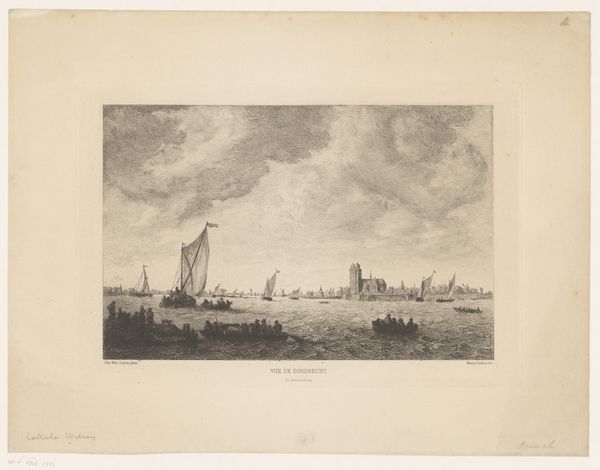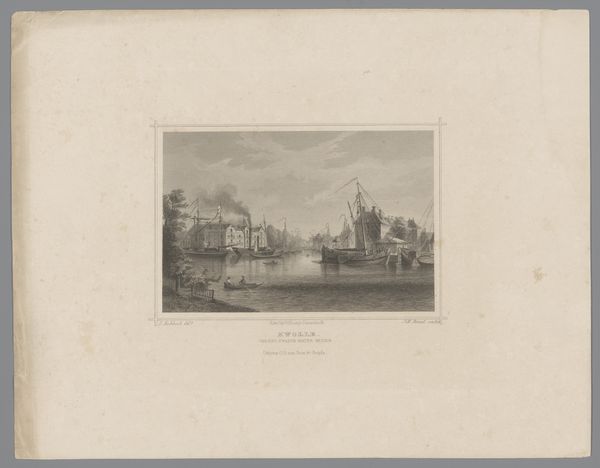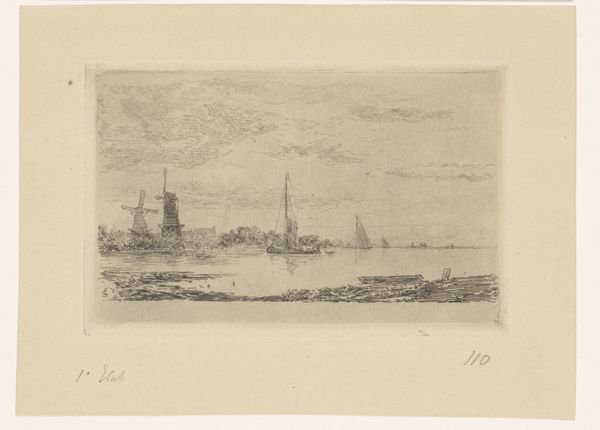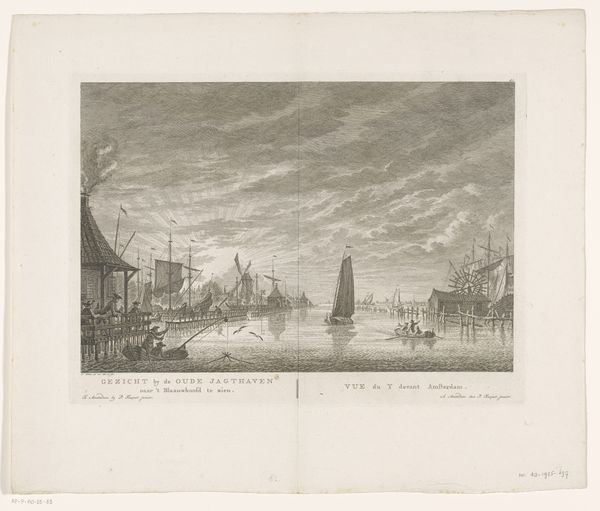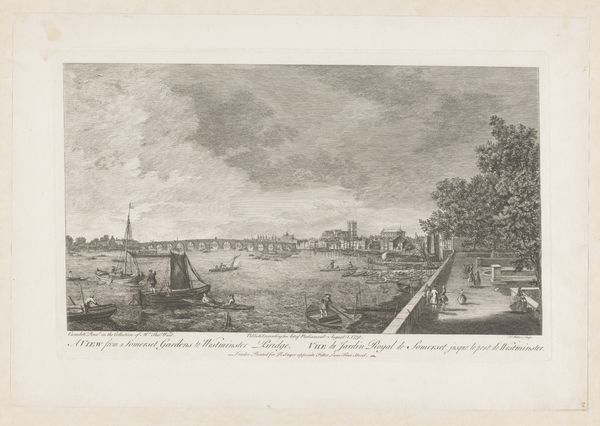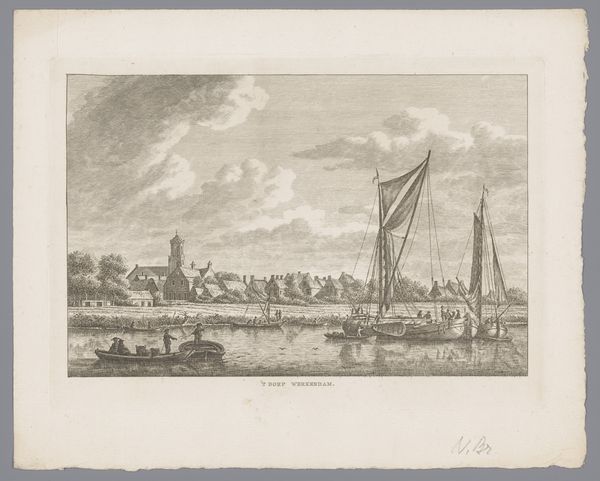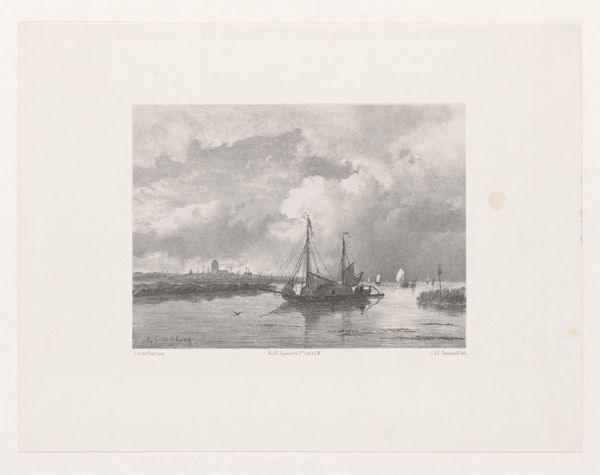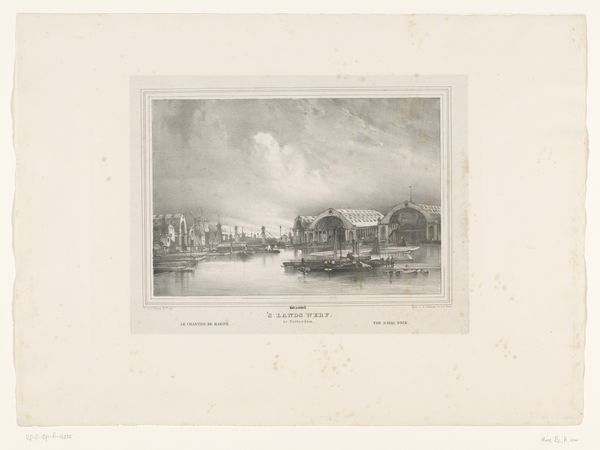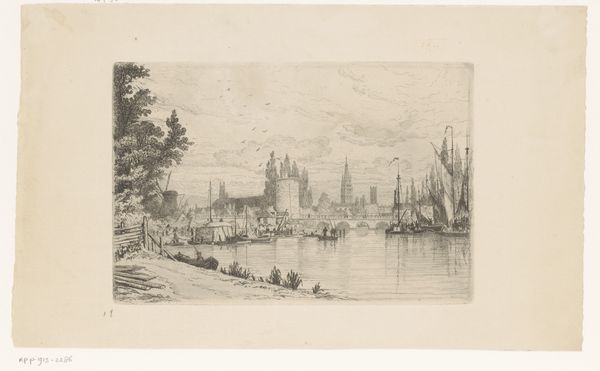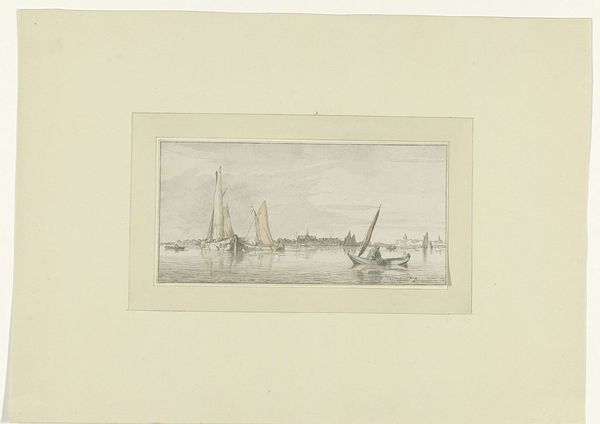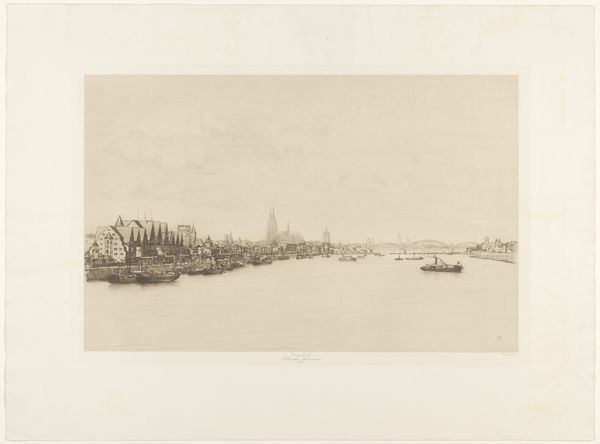
print, engraving
# print
#
old engraving style
#
landscape
#
cityscape
#
engraving
Dimensions: height 203 mm, width 260 mm
Copyright: Rijks Museum: Open Domain
Curator: Welcome to this detailed engraving, "Gezicht op de Merwede voor Dordrecht," dating between 1847 and 1889, created by William Unger. Editor: My initial impression is one of quiet industry, a city going about its daily life. There's something about the density of the buildings combined with the serene water that creates an interesting visual tension. Curator: The composition certainly plays on that tension, doesn’t it? The tonal variations Unger achieves through the engraving technique, the density of lines in the clouds contrasting with the smoother areas of the water, it all creates a visual harmony. The precision here is undeniable, particularly in rendering the architectural forms. Editor: But that harmony also belies the historical context. Dordrecht was a vital port city; it represented both wealth and connection to a global market often built on colonial exploitation. These waterways facilitated trade but also represent a source of labor for the people, and perhaps their vulnerability to outside economic forces. Are they participating in something empowering or perpetuating their subservience to trade? Curator: I appreciate you drawing out those connections. Viewing this piece primarily through its formal attributes, I see a celebration of light and shadow and the textures they bring. The visual hierarchy establishes the cityscape, then softens into clouds and the reflections on the Merwede river. Editor: Absolutely, the soft contrasts in tonality gives the landscape a somber quality. It is technically excellent and highlights the artistic movements happening in 19th century Europe. However, its historical placement within the period and the scene displayed in the artwork forces us to confront what landscape scenes typically omit in art historical memory. Curator: Ultimately, this work represents a culmination of detailed rendering, the print acting as an intricate and evocative representation of Dordrecht at the time. Editor: Yes, it compels us to see beyond just the formal excellence and engage with a historical and social framework—a viewpoint I find critical to contextualizing the true narrative embedded within art like this.
Comments
No comments
Be the first to comment and join the conversation on the ultimate creative platform.

